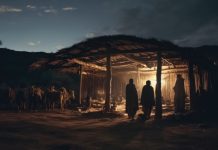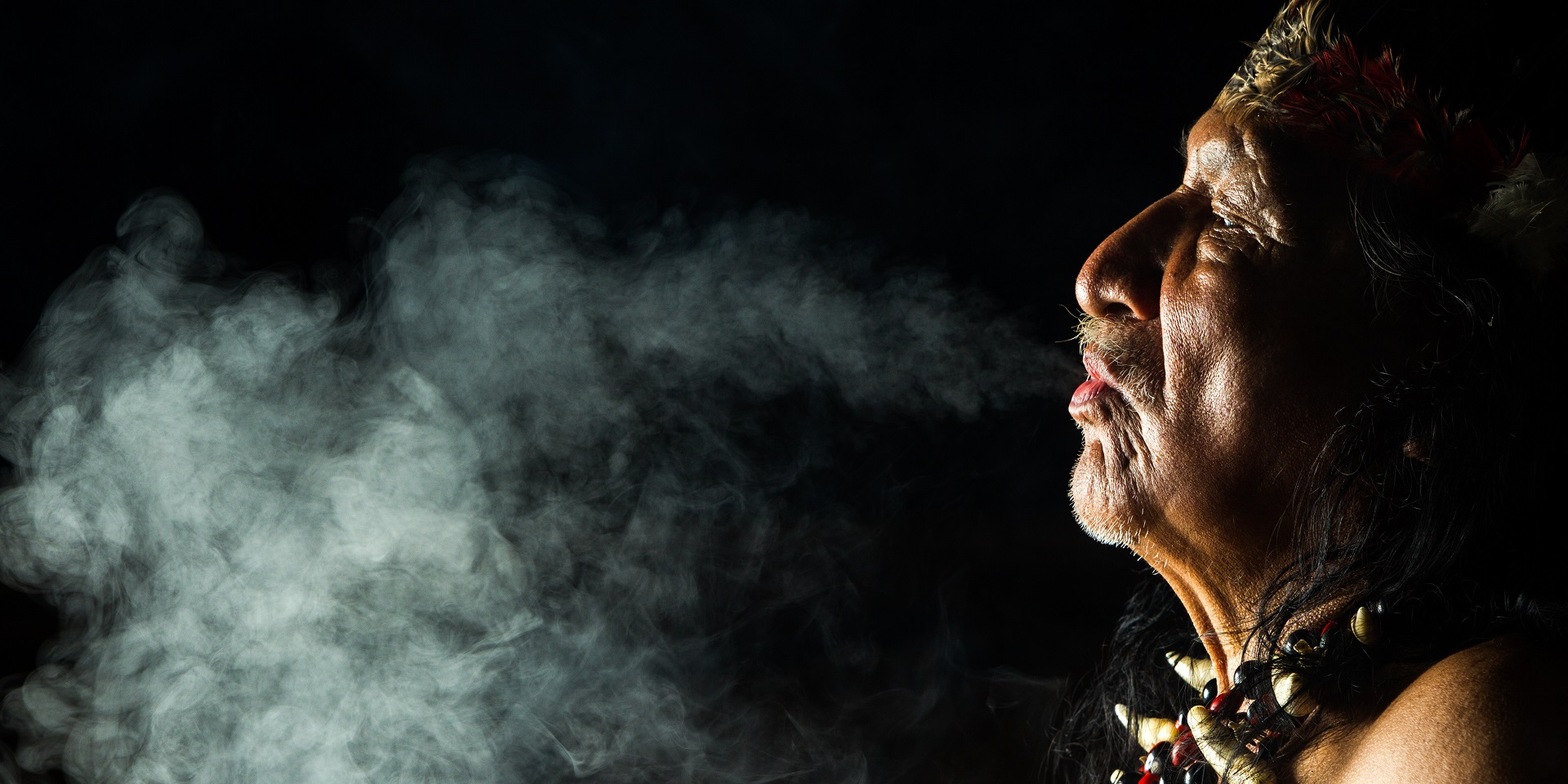Jim Elliot was 25 years old when he headed to Ecuador as a result of the answer he sought from God regarding his future.
As a child, he had dreamed of being a sailor and had learned the terminology of ships and sailing from Webster’s dictionary. Talented in drawing as well, during high school, he became interested in architecture. The journey to Ecuador meant abandoning his childhood dreams, leaving his parents, parting from the woman who was supposed to be his wife, and giving up the success that everyone expected him to have as a college literature professor.
Everything was cast aside to live among wild tribes in the jungle. According to his wife’s description, Jim was not the typical Christian missionary. It was his father who had taught him from a young age that the Bible is a book that must be lived out, and that this life is not austere, boring, or isolated from society.
When he decided to dedicate his life to Jesus, Jim also decided to be proud of his faith, and among all the textbooks he carried to class, the Bible always reigned supreme. However, his forsaken girlfriend, who eventually became his wife and followed him to Ecuador, writes that as devoted as he was to the Bible and to God, he was equally happy to be among his fellow human beings. Elliot was admired by his colleagues, who considered him not only an an extraordinary character, but also a humorous friend.
A heart after God’s own heart
Jim planned days of prayer to understand God’s plan. And how did he find the answer?
“No visions, no voices, but the counsel of a heart which desires God.”[1] Thus, towards the end of his studies, he followed his God-desiring heart, which told him that he had to become a missionary in a South American country. In the letter informing his parents of his decision, he tells the story of feeling pulled back by the temptation of fame, an important position, and academic success.
“Surely they can mean nothing to the soul who has seen the beauty of Jesus Christ,” he concluded.[2] His parents told him that he could be just as effective in the United States, but Jim was unwavering. “I dare not stay home while Quichuas perish. What if the well-filled church in the homeland needs stirring? They have the Scriptures, Moses, and the prophets, and a whole lot more.”[3]
In contrast, the Indians had nothing but a harsh, violent life dominated by shamans, anger, and blood. Among all the Indian tribes that inhabited Ecuador, one remained resistant to Western attempts to bridge the gap between modernity and savagery.
Armed with the Gospel, missionaries had already been working in the territory for 25 years and had reached many tribes, but the Auca tribe consistently rejected all of their initiatives. The fate of those who attempted to approach this semi-nomadic tribe was, with few exceptions, drastic. The stakes of contact with the tribe were neither few nor small. From Jesuit missionaries to conquistadors, from settlers in the area to those working for the Shell oil company’s station, hardly anyone escaped alive.
However, the natives also would likely have been decimated if Elliot and his team hadn’t found them in time because the rate of inter- and intra-tribal killings was extremely high. For the missionaries, it was evident that these people needed to know God. With a strong belief in their mission to preach the Gospel to the ends of the earth, the young men Jim Elliot, Pete Fleming, Ed McCully, Nate Saint, and Roger Youderian, along with their wives and children, moved to Ecuador to start their mission.
Five men and a yellow aeroplane
The mission began with a year of preparation in a camp of “former savages,” saved from other tribes, among whom was Dayuma, a girl who had fled from the Auca tribe out of fear of being killed. With the few messages of friendship they had learned, the men flew over the tribe’s camps in a small yellow aeroplane, shouting their messages and dropping gifts tied with a rope from the plane. Many weeks passed, and 15 gifts were dropped until the people of the tribe started responding with a sign of friendship, preparing a gift for the missionaries as well.
Encouraged by the established relationship, on January 3, 1956, the five men landed on the beach of the Curaray River, near the tribe, and set up their camp there. Three days later, the first visitors arrived, showing enthusiasm for the aeroplane. Encouraged by the success of the first encounter, the missionaries were convinced that the next opportunity would be the one they had been waiting for, the one chosen by God Himself to make His word known to the locals.
That opportunity was to come on the following Sunday. The missionaries instructed their wives to pray and wait for the next signal from them at 16h40. When the hands of the clock reached that point, everything froze. No radio crackle, no signal. Five minutes, ten minutes…nothing. Could things have gone so well that the men were still engaging with the Indians? At 7 o’clock in the morning, on Monday, January 9, 1956, Johnny Keenan, who had set out in search of the missionaries aboard a small aircraft, sent the first message: the yellow aeroplane had been found completely destroyed; it also had a bullet hole in it.
“The fruit of the righteous is a tree of life, and the one who is wise saves lives” (Proverbs 11:30).
The missionaries were nowhere to be found. News of their disappearance made headlines in US newspapers, and a team was sent to find them. Three days after the loss of contact, the first body was found, and thereafter, three more. They had been thrown into the river; some still had spears in them and traces of machete wounds. Ed McCully’s body was not found, but an Indian who had recently converted through Ed’s efforts found his watch and a shoe.
The unwavering trust in God’s will of these martyrs’ wives helped their children understand that what had happened was not a tragedy but part of God’s plan, for which they had all been prepared. While the adults accepted God’s plan, this wasn’t as easy for the younger ones. Ed’s daughter was only three years old at the time and often expressed how much she missed her father, saying, “I just wish…he could play with me from time to time.”
A few weeks after her father’s death, her longing was partially healed by the arrival of a little brother. Wasn’t the price too high? Five young lives lost without even achieving their purpose? Jim Elliot’s wife was certain it wasn’t so. From the letters the widows received from missionaries all over the world, from Europe to Africa, Japan, and America, it seemed that the entire missionary movement was revitalised and placed with even greater dedication into God’s hands.
Far from the coast of Italy, a U.S. Navy officer, a victim of a shipwreck, remembered Jim’s words that he had read in a newspaper: “When the time comes to die, make sure that all you have to do is die!” He prayed to be saved, acknowledging that he had much more to do. God answered his prayer.
Even the wives of the five missionaries returned to the mission immediately after the tragedy. Later, it would be shown that the missionaries’ goal was achieved at the very moment of their ultimate sacrifice.
Baptised by the killers
“Today I sit in a tiny leaf-thatched hut on the Tiwanu River, not many miles southwest of ‘Palm Beach’ (the place where the five men died). In another leaf house, just about ten feet away, sit two of the seven men who killed my husband,” wrote Jim’s widow, Elisabeth, three years after her husband’s murder. How is this possible? Rachel Saint, the sister of the slain pilot, continued to live near the tribe and to study the Auca dialect with Dayuma’s help. Meanwhile, two other women from the tribe had fled and reached the “refugee” camp.
When the three Auca women, now all Christians, met after 12 years, they began to discuss the possibility of returning to the tribe. And they did just that on September 3, 1958. They stayed there for three weeks, sharing stories about the white people they had come to love. In the end, they returned to the camp with an invitation for Rachel and Elisabeth, along with their children, to come and live in the Auca tribe. Thus, on October 8, 1958, the miracle long-awaited by the missionaries happened.
“For whoever wants to save their life will lose it, but whoever loses their life for me and for the gospel will save it” (Mark 8:35).
The tribe welcomed them with friendship, built them houses, and Nate’s son, Stephen, was baptised by his father’s killers, who were now his friends. The men explained that they had killed the missionaries because they believed they were cannibals. Fear had driven them to act in a way they now considered wrong, but knowing God, they understood that on that day when the missionaries did not use their guns to shoot at them, they were saved from their own hatred, anger, and savagery, which up until then had been taking lives in an instant.
On the bank of a foreign river, five missionaries found themselves in a place where no one else had been and where no one else could reach: facing a deeply personal and unique choice for each of them—their own lives or the lives of the savages. In the face of imminent death, they had time to understand the consequences of their choices and still carry out the ultimate sacrifice.
We all owe a debt to death, but what impact will it have on the world we leave behind?



















